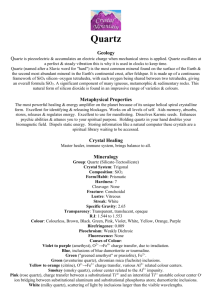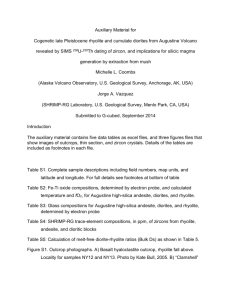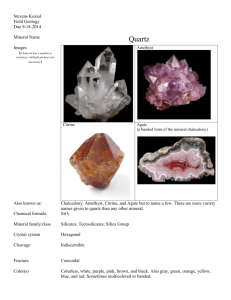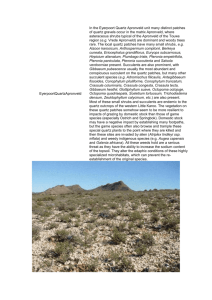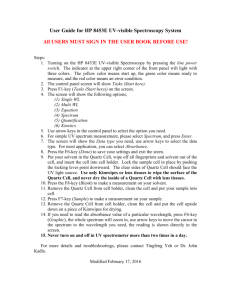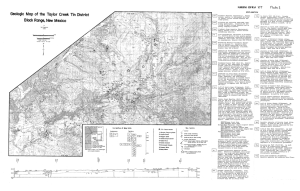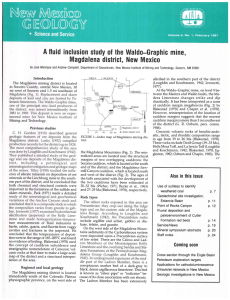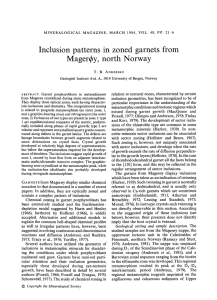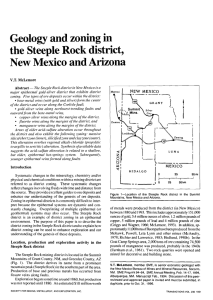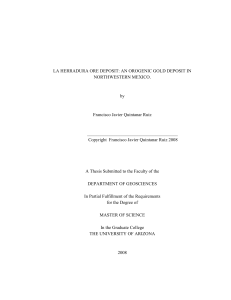Material properties and microstructure from
advertisement
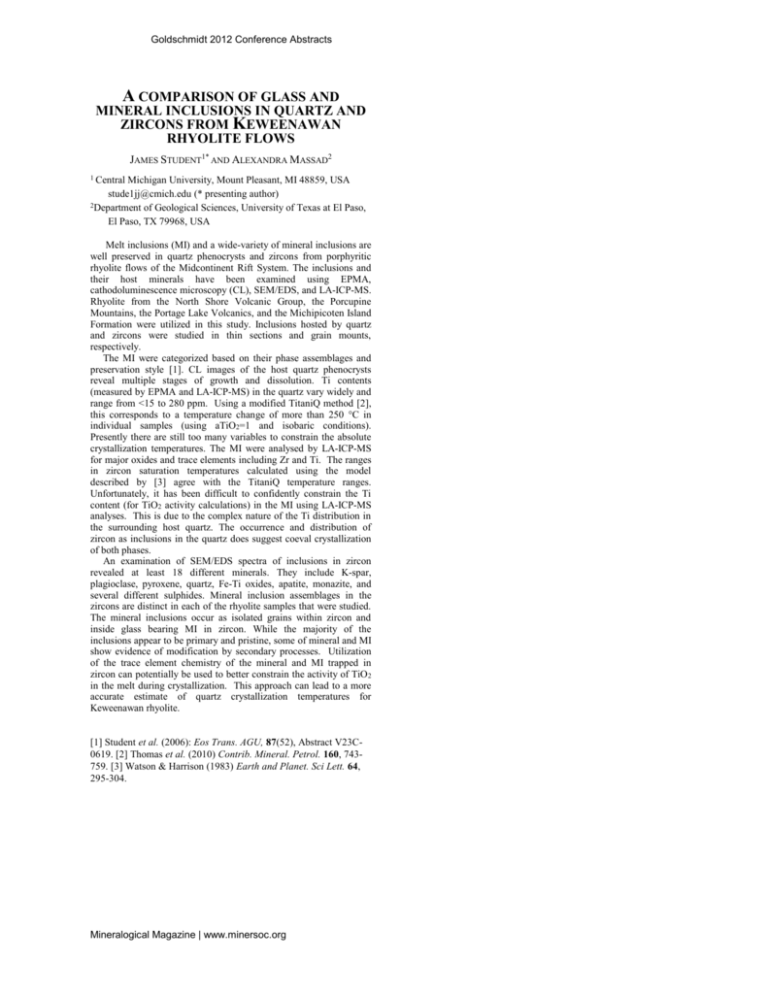
Goldschmidt 2012 Conference Abstracts A COMPARISON OF GLASS AND MINERAL INCLUSIONS IN QUARTZ AND ZIRCONS FROM KEWEENAWAN RHYOLITE FLOWS JAMES STUDENT1* AND ALEXANDRA MASSAD2 1 Central Michigan University, Mount Pleasant, MI 48859, USA stude1jj@cmich.edu (* presenting author) 2Department of Geological Sciences, University of Texas at El Paso, El Paso, TX 79968, USA Melt inclusions (MI) and a wide-variety of mineral inclusions are well preserved in quartz phenocrysts and zircons from porphyritic rhyolite flows of the Midcontinent Rift System. The inclusions and their host minerals have been examined using EPMA, cathodoluminescence microscopy (CL), SEM/EDS, and LA-ICP-MS. Rhyolite from the North Shore Volcanic Group, the Porcupine Mountains, the Portage Lake Volcanics, and the Michipicoten Island Formation were utilized in this study. Inclusions hosted by quartz and zircons were studied in thin sections and grain mounts, respectively. The MI were categorized based on their phase assemblages and preservation style [1]. CL images of the host quartz phenocrysts reveal multiple stages of growth and dissolution. Ti contents (measured by EPMA and LA-ICP-MS) in the quartz vary widely and range from <15 to 280 ppm. Using a modified TitaniQ method [2], this corresponds to a temperature change of more than 250 °C in individual samples (using aTiO2=1 and isobaric conditions). Presently there are still too many variables to constrain the absolute crystallization temperatures. The MI were analysed by LA-ICP-MS for major oxides and trace elements including Zr and Ti. The ranges in zircon saturation temperatures calculated using the model described by [3] agree with the TitaniQ temperature ranges. Unfortunately, it has been difficult to confidently constrain the Ti content (for TiO2 activity calculations) in the MI using LA-ICP-MS analyses. This is due to the complex nature of the Ti distribution in the surrounding host quartz. The occurrence and distribution of zircon as inclusions in the quartz does suggest coeval crystallization of both phases. An examination of SEM/EDS spectra of inclusions in zircon revealed at least 18 different minerals. They include K-spar, plagioclase, pyroxene, quartz, Fe-Ti oxides, apatite, monazite, and several different sulphides. Mineral inclusion assemblages in the zircons are distinct in each of the rhyolite samples that were studied. The mineral inclusions occur as isolated grains within zircon and inside glass bearing MI in zircon. While the majority of the inclusions appear to be primary and pristine, some of mineral and MI show evidence of modification by secondary processes. Utilization of the trace element chemistry of the mineral and MI trapped in zircon can potentially be used to better constrain the activity of TiO 2 in the melt during crystallization. This approach can lead to a more accurate estimate of quartz crystallization temperatures for Keweenawan rhyolite. [1] Student et al. (2006): Eos Trans. AGU, 87(52), Abstract V23C0619. [2] Thomas et al. (2010) Contrib. Mineral. Petrol. 160, 743759. [3] Watson & Harrison (1983) Earth and Planet. Sci Lett. 64, 295-304. Mineralogical Magazine | www.minersoc.org

